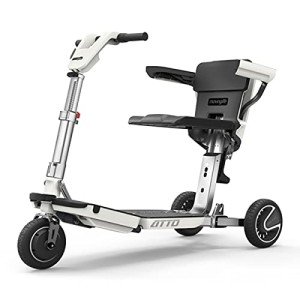The Best Mobility Devices Strategies To Make A Difference In Your Life
Understanding Mobility Devices: Enhancing Independence and Quality of Life
In today's busy world, the desire for mobility is universal. However, particular medical conditions or age-related difficulties can prevent movement, resulting in a continuous search for help. Mobility devices serve as important tools to enhance independence, improve lifestyle, and enable people to engage completely in their communities. This article supplies an extensive introduction of mobility devices, including their types, functions, selection criteria, and more.
Kinds Of Mobility Devices
Mobility devices range from basic aids to complicated devices, tailored to satisfy numerous needs. Below is a table summarizing common kinds of mobility devices:
Type of Device
Description
Ideal For
Walkers
Four-legged assistance devices that offer superior stability while walking.
People needing additional assistance.
Walking canes
Single or three-legged sticks that enhance balance and support walking.
Those with small mobility problems.
Wheelchairs
Seats installed on wheels, offered in manual and electric variations.
People with minimal or no mobility.
Scooters
Electric cars created for outside use and ease of navigation.
Those who can't walk fars away.
Crutches
Devices that assist individuals move weight far from an injured leg.
People recovering from leg injuries.
Rollators
Walkers with wheels, seats, and brakes for improved mobility.
Users needing rest alternatives while strolling.
Lift Chairs
Reclining chairs that assist users in standing up and sitting down.
Seniors or those with mobility constraints.
Mobility Scooters
Small electric automobiles for restricted mobility, frequently utilized outdoors.
People requiring assistance over long ranges.
Key Features of Mobility Devices
When selecting a mobility gadget, a number of key functions should be thought about to guarantee ideal performance and ease of use:
- Weight Capacity: Understanding the gadget's weight constraint is vital for security and effectiveness.
- Adjustability: Devices ought to be adjustable in height and width to fit the user comfortably.
- Mobility: Lightweight and foldable choices are important for users who travel or require transport.
- Stability and Safety: Look for functions like anti-tip wheels and tough structures to improve safety.
- Alleviate of Use: Simple systems and easy to use designs can make a substantial distinction in everyday usage.
- Comfort: Ergonomic styles and cushioned seats can enhance the user experience.
Choosing the Right Mobility Device
Picking the best mobility device can be a challenging job. Here are some actions to direct the decision-making procedure:
- Assess Needs: Evaluate the person's mobility obstacles and daily activities.
- Seek advice from a Professional: Engage health care specialists who can supply suggestions based on the person's physical condition.
- Trial Options: If possible, trial different devices to identify comfort and performance.
- Review Budget: Consider the cost of the gadget, including any extra functions or adjustments required.
- Research study Options: Determine the best brand names and designs by checking out reviews and contrasts.
Table: Comparative Analysis of Popular Mobility Devices
Gadget
Advantages
Drawbacks
Walkers
Exceptional stability, promotes walking.
Bulky, may limit motion in small spaces.
Canes
Lightweight, improves balance.
Might not supply enough support for serious mobility issues.
Wheelchairs
Perfect for those with considerable mobility restrictions.
Can be cumbersome, specifically in indoor environments.
Scooters
Great for outdoor usage, easy to maneuver.
Minimal indoor functionality, heavier.
Rollators
Provides rest choice, simple to move.
May require more space than standard walkers.
Lift Chairs
Comfy, assists shift from sitting to standing.
More pricey, larger footprint.
Frequently Asked Questions (FAQs)
1. What is a mobility device?
A mobility device is any tool created to help people in moving and navigating their environment. This includes walkers, wheelchairs, scooters, and crutches.
2. How do I know which mobility device is best for me?
Consider your specific mobility challenges, physical capabilities, and lifestyle needs. Consulting with healthcare experts can also offer customized suggestions.
3. Are mobility devices covered by insurance coverage?
Lots of insurance strategies, including Medicare, might cover specific mobility devices. compact lightweight scooters to consult your insurance supplier for specific coverage details.
4. Can I lease a mobility gadget instead of buying one?
Yes, lots of medical supply stores and drug stores provide rentals for mobility devices. This option is beneficial for people with momentary mobility issues.
5. How can I maintain my mobility gadget?
Routine maintenance is essential. It consists of cleaning up the device, inspecting for wear and tear, and making sure all parts are functioning correctly.
The Impact of Mobility Devices on Quality of Life
Mobility devices significantly enhance the quality of life for individuals with minimal mobility. They cultivate self-reliance, encourage social interaction, and improve access to essential services and leisure activities.
- Increased Independence: Users can browse their communities, participate in events, and engage in hobbies without depending on others.
- Social Engagement: Mobility devices assist in participation in celebrations, thereby combating feelings of seclusion.
- Enhanced Safety: Devices offer stability and minimize the threat of falls, promoting user confidence.
Mobility devices are more than just tools for motion; they are gateways to independence and quality living. By understanding the different kinds of mobility aids available, their key functions, and factors to consider for choosing the ideal gadget, people can make informed decisions about their mobility requires. Ultimately, the ideal mobility device can lead to a more active, satisfying life. Whether it's a walker, wheelchair, or scooter, the right choice contributes significantly to improving the mobility and independence of users.
